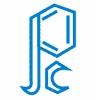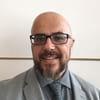The Importance of Zinc in Animal Health
Published: June 6, 2013
Source : Agranco



History
- 1509, recognized as element
- Essentiality demonstrated
- Plants: 1869
- Animals: 1934
- Deficiency
- Considered unlikely until 1955
- swine parakeratosis shown to be caused by Zn deficiency
- conditioned human deficiency demonstrated in 1956
- 1961, hypogonadal dwarfism suggested to be zinc deficiency
- Considered unlikely until 1955
Facts
- 30th element in the periodic table (IIB element)
- MW = 65.37, completely filled d orbitals
- In aqueous solutions
- One oxidation state, namely Zn2+
- Prefers tetrahedral complex formation
- Not a redox active metal
- readily complexes with amino acids, peptides, proteins and nucleotides
- affinity for thiols, hydroxy groups & ligands with electron-rich nitrogen donors
Distribution

Sources
- Relatively abundant mineral
- Good sources: shellfish, beef and other red meats
- Slightly less good: Whole-grains
- most in bran and germ portions
- 80% lost to milling
- phytates, hexa & penta phosphates depress absorption
- P/Zn ratios of 10 or more
- Relatively good sources: nuts and legumes
- Eggs, milk, poultry & fish diets lower than pork, beef, lamb diets
- High meat diets enhance absorption
- 280g or 10 oz fits right into food pyramid guide
- cys & met form stable chelate complexes
- High meat diets enhance absorption

Effect of trace mineral source on animal performance

Relative bioavailability of trace mineral sources

Whole Body Fluxes

Dietary Factors that Affect Zn Absorption
- Feed/Food source
- Phytate (calcium-phytate-zinc complex)
- Mainly hexa- and pentaphosphate derivatives
- Highly dependent on calcium
- Amino Acids
- histidine, cysteine
- Presence/Absence of other divalent cations
- Fe, Ca
- Efficiency of absorption can vary from 15-60%
- Under normal conditions 1/3 of dietary Zn is absorbed
- Zn status alters efficiency of absorption
- Uptake and retention is > in growing animals
Overview
- Approximately 300 enzymes are associated with zinc
- Biological functions of Zn are divided into three categories
- Catalytic, Structural, Regulatory
- Role in metabolism
- Protein synthesis
- Nucleic acid metabolism
- Carbohydrate and energy metabolism
- Lipid
- Epithelial tissue integrity
- Cell repair and division
- Vitamin A and E transport and utilization
- Immune function
- Reproductive hormones
Absorption
- Absorption takes place throughout the intestine
- Glycocalyx
- Barrier? Storage site?
- Primarily in the jejunum
- Some absorption in the rumen
- No measurable amounts absorbed from stomach cecum or colon
- Glycocalyx
- In small intestine
- Nonmediated (nonsaturable) process
- Not affected by dietary Zn intake
- Mediated (saturable) process
- Stimulated by Zn depletion

Transport in blood
- Plasma contains approx .1% of the total zinc of the body
- Albumin is major portal carrier
- Binds to albumin by tetrahedral ligation to sulfur atoms
- 70% of Zn is bound to albumin in plasma
- 20-30% bound to α-2 macroglobulin
- Other plasma proteins
- Transferrin, histidine-rich glycoprotein, metallothionine
- Plasma Zn concn's respond to external stimuli Intake fluctuations Fasting Acute stresses infection Plasma Zn levels do not influence absorption from mucosa
- Most reductions in plasma levels reflect increased hepatic uptake
- Hormonal control
Transport
- Rapidly cleared from plasma by liver
- Fast component of 2 pool model (T1/2 = 12.3 da)
- Single dose of zinc is taken up with T1/2 = 20 s
- Slow component, other tissues (T1/2 = 300 da)
- Bone and CNS uptake slow
- Pancreas, liver and kidney most rapid
- RBC & muscle in between
- Exchangeable pool & zinc status
Cellular Uptake
- Hepatic uptake via a biphasic process
- Contribution to overall Zn flux
- Sequesters newly absorbed Zn
- Removes Zn from the circulation
- Saturable process – initial step
- Temperature dependent
- rapid
- Stimulated by glucocorticoids
- Linear accumulation – subsequent step
- slow
- Not affected by dietary Zn intake
- Does not require energy
- Contribution to overall Zn flux
- Erythrocytes
- Depends upon bicarbonate ions
- Fibroblasts, proximal tubule, lymphocyte
- Biphasic uptake (same as liver)
Intracellular Transport
- Zinc transporters regulate Zn ion concentrations through import, export or sequestering Zn into vesicles
- Storage, toxicity
- 2 families exist:
- ZnT- mainly exports Zn ions from cells
- ZIP – important for Zn influx
- Number of transporters
- ZnT-1: all organs, small intestine (basolateral membrane), kidney (tubular cells), placenta
- Efflux
- ZnT-2: intestine, kidney, testis
- Efflux & (?) intracellular vesicles
- ZnT-3: brain (synaptic vesicles) & testis
- Influx, intracellular retention
- ZnT-4: mammary gland & brain
- Efflux (into milk) Lethal mouse transgenic
- ZnT-1: all organs, small intestine (basolateral membrane), kidney (tubular cells), placenta
- ZIP family transporters:
- Consist of:
- hZIP1
- hZIP2
- hZIP3
- Responsible for influx of Zn as well as Mn2+, Cd2+, and other divalent cations into cells
- Consist of:
- Number of transporters
- DCT1: duodenum, jejunum, kidney, bone marrow, others
- Non-specific: Zn, Cd, Mn & Cu actually have slightly higher affinity than Fe, the mineral for which the transport actions of this protein was first identified.
- Competition between Fe & Zn & Cu
- DCT1: duodenum, jejunum, kidney, bone marrow, others

Storage
- Storage sites
- No specfic storage sites are recognized
- Within cells, amounts sequestered within metallothionine could be considered as stores
- Anorexia, muscle catabolism, tissue zinc release
- Metalloenzymes cling tenaciously to zinc
- Serum/plasma zinc drops rapidly (~1 week) with zinc deficient diet
- Zinc turnover is extensive and rapid
- Two-components of turnover, fast ~12.3 days, and slow, ~300 days
- Fast pool is also called the "exchangeable" pool
- Usually amounts to 157-183 mg Zn
- Zinc turnover is extensive and rapid
- No specfic storage sites are recognized
Excretion
- Lost via hair, sweat, desquamation, bile pancreatic secretions, seminal fluid, urine, feces
- Main endogenous loss
- Secretions into gut
- Bile and pancreas
- Mucosal cells
- Secretions into gut
- Urinary and integumental losses
- < 20% under normal conditions
- Losses increase with trauma, muscle catabolism, and administration of chelating agents (EDTA)
- < 20% under normal conditions
- Primarily in fecal material
- Unabsorbed Zn
- Secreted Zn (endogenous sources)
- From pancreatic and intestinal sources
Regulation
- Metallothionein
- Concentrated in liver, kidney, pancreas, intestine
- Acts as a Zn2+ buffer
- Controls free Zn2+ level
- Control intracellular Zn pool responsive to both hormones and diet
- Zn-binding protein, metallothionein (MT), is involved in the regulation of Zn metabolism
- MT is inducible by dietary Zn via the metal response element (MRE) and MTF-1 mechanism of transcriptional regulation
- ↑ in cellular MT ↑ Zn binding within cells
- Acute infections associated with proinflammatory cytokines increses Zn uptake into liver, bone marrow and thymus and reduces the amount going to bone, skin and intestine
Metabolic Interactions
- Interactions of other divalent cations in the intestinal lumen ?
- ↑Fe, ? ↑Sn, ↑? Cd → ↓ Zn
- ↑ Zn → ↓ Cu
Interactions
- Copper
- High Zn diets reduce Cu absorption
- electronic configuration competition
- Metallothionine synthesis induced
- sequesters Cu in mucosal cell preventing serosal transfer
- Happens with 150mg Zn for two years
- Can be used with Wilson's disease patients
- High copper diets do not interfere with Zinc absorption
- sequesters Cu in mucosal cell preventing serosal transfer
- High Zn diets reduce Cu absorption
- Iron
- Supplements inhibit zinc absorption
- Ferrous > Ferric, heme no effect
- Pregnant and taking >60mg Fe/day should also take Zn
- Supplements inhibit zinc absorption
- Calcium
- High Ca diets reduce Zn absorption
- effect enhanced in phytate rich diets
- not sure how much of a problem in humans
- post menopausal women yes, adolescent girls, no
- High Ca diets reduce Zn absorption
- Other
- Tin (Sb), not usually high in diet, but diets high in Tin can increase fecal Zn excretion
- Cadmium (Cd), alter Zn distribution in body rather than altering absorption
- Folic acid, conjugase requires Zn
- High doses sometimes impair Zn status further in low Zn situation - mechanism currently unclear
Function
- Zinc-containing enzymes
- More than 70 enzymes
- Secondary & tertiary protein structures
- Metal stabilized active sites
- Secondary & tertiary protein structures
- Examples of general types
- dehydrogenases
- phosphatases
- peptidases
- kinases
- deaminases
- More than 70 enzymes
- Insulin
- Cu/Zn Superoxide Dismutase
- General class of enzymes that protect against oxidative damage in the body.
- Insulin
- Zn important structurally
- Zn needed for insulin "stored" in pancreas
- Functionality drops rapidly so more of a "working store" than a static store
- Nuclear transcription factors (>130)
- Same protein structural role forms "zinc-fingers"
- "Zn-fingers" bind DNA
- allow different nuclear hormones to interact with DNA via different DNA binding proteins
- up to 37 "fingers" have been found on a single transcription factor
- Vit. A, Vit. D, steroid hormones, insulin-like growth factor-1, growth hormone, and others bind to zinc-finger proteins to modulate gene expression
- Zn is responsible for thymidine incorporation
- allow different nuclear hormones to interact with DNA via different DNA binding proteins
- Cell Differentiation
- Thymidine kinase activity
- Creatine kinase activity
Transcription Factors
- Transcription factors
- Regulate gene expression
- Involved in virtually all biological processes:
- Development, differentiation, cell proliferation, response to external stimuli
- Consists of 2 domains
- DNA Binding Domain (DBD) – recognizes and binds to specific DNA sequence elements in the promoter of target genes
- Protein-interacting Transactivation Domain (TAD) – influences the rate of transcription
Zinc Finger Proteins
- Zinc finger proteins are characterized by their utilization of zinc ions as structural components
- C2H2 zinc finger binding motif
- Predominant motif in eukaryotic transcription
- Involved in skeletal differentiation
- Zinc binding motif is determined by the presence of 2 cysteine and 2 histidine residues that engage in a four coordinate bond with a singe Zn ion
- Bind to response elements in the upstream promoters of genes transcribed by RNA poly 2
- Binds to 5S ribosomal RNA gene, and 5S RNA, and activates transcription by RNA polymerase 3.
Mech of Transcription


Function



- Zinc Fingers
- Mutation c/ablation of binding
- in case of Zif268, loss in sequence-specific DNA binding that allowed viral infection
- Iron can replace Zn in "fingers"
- Low Zn and high Fe
- Fe gives rise to ROS more readily
- DNA damage & carcinogenesis?
- Cadmium can replace Zn in "fingers"
- Non-functional, cytotoxic
- Mutation c/ablation of binding
Transcription Factors
- Revelation
- Gene expression is controlled by specific proteins call transcription factors
- Zinc containing transcription factors account for 1% of genome
- Zinc plays key structural role in transcription factor proteins
- Ligands for transcription factors include:
- Vitamin A
- Vitamin D
- Bile acids
- Thyroid hormones
- Gene expression is controlled by specific proteins call transcription factors
Membrane Stability
- Membrane fractions contain high concentrations of Zn
- Increases rigidity of cell
- Protection from oxidative damage
- Competition for binding sites with redox metals
Membrane Function
- In deficient animals:
- Failure of platelet aggregation
- Due to impaired Calcium uptake
- Peripheral neuropathy
- Brain synaptic vesicles exhibit impaired calcium uptake
- Increased osmotic fragility in RBCs
- Decreased plasma membrane sulfhydryl concentration
- Failure of platelet aggregation
Immune Function
- After Zinc depletion
- All functions within monocytes were impaired
- Cytotoxicity decreased in Natural Killer Cells
- Phagocytosis is reduced in neutrophils
- Normal function of T-cells are impaired
- B cells undergo apoptosis
- High Zn supplementation shows alterations in cells similar to Zn depletion
Vitamin A & Zinc
- Zn influences Vitamin A metabolism
- Absorption, transport, and utilization
- Vitamin A transport is mediated through protein synthesis
- Zn deficiency can depress synthesis of retinol-binding protein in liver
- Oxidative conversion of retinol to retinal requires Zn-dependent retinol dehydrogenase enzyme
- Retinol to retinaldehyde (retinal), for visual processes
- Vitamin A transport is mediated through protein synthesis
- Absorption, transport, and utilization
- Night Blindness
- Hallmark deficiency sign for Vitamin A
- Seen with Zn deficiency as well, why?
- Hallmark deficiency sign for Vitamin A
- Stojanovic, Stitham and Hwa: Critical Rose of Transmembrane segment Zn binding I the structure and function of rhodopsin JBC 279(34):35932-35941, 2004
- Rhodopsin proteins
Vitamin A

Zn and Vitamin A Interaction

Mechanisms of Toxicity
- Excess accumulation within cells may disrupt functions of biological molecules
- Protein, enzymes, DNA
- Leads to toxic consequences
- Protein, enzymes, DNA
- Anemia
- Impaired copper availability
- Acute excessive intakes
- Local irritant to tissues and membranes
- GI distress, nausea, vomiting, abdominal cramps, diarrhea
- Local irritant to tissues and membranes
- Relatively non-toxic
- Sources of exposure – drinking water, feed, polluted air
Deficiency
- Signs
- Growth retardation
- Delayed sexual maturation & impotence
- Impaired testicular development
- Hypogonadism & hypospermia
- Alopecia
- Acroorifical skin lesions
- Other, glossitis, alopecia & nail dystrophy
- Immune deficiencies
- Behavioral changes
- More signs
- Night blindness
- Impaired taste (hypoguesia)
- Delayed healing of wounds, burns, decubitus ulcers
- Impaired appetite & food intake
- Eye lesions including photophobia & lack of dark adaptation
- Monogastric more susceptible
- Chickens & pigs used to become deficient with high corn diets
- Old enemy phytate
- Ruminants resistant due to ability to break down phytates
- Chickens & pigs used to become deficient with high corn diets
- Diabetes
- Increases urinary zinc excretion
- Can cause deficiency
- Increases urinary zinc excretion
- Elderly
- Poor intakes & altered physiology
Deficiency During Pregnancy
- Zn deficient rats failed to conceive
- Abnormalities of blastocyst development
- Offspring had high incidence of abnormalities
- Deformities of brain, skull, limbs, eyes, heart, lungs
- Low Zn intake during the third trimester may not have such profound effects
- Main stages of differentiation are already complete
- Can result in low birth weight, and prolonged and difficult parturition


Malformations in Zn deficiency
Cleft lip
Cleft palate
Brain (Hydrocephalus, anencephalus or exencephalus)
Micro- or agnathia
Micro- or anopthalmia
Clubbed feet
A- or syndactyly
Curly or stubby tail
Dorsal herniation
Heart (abnormal position)
Lung (missing lobes)
Urogentital (Hydronephrosis, missing kidney, or abnormal positions)
Cleft palate
Brain (Hydrocephalus, anencephalus or exencephalus)
Micro- or agnathia
Micro- or anopthalmia
Clubbed feet
A- or syndactyly
Curly or stubby tail
Dorsal herniation
Heart (abnormal position)
Lung (missing lobes)
Urogentital (Hydronephrosis, missing kidney, or abnormal positions)

Stress Response
- Factors that decrease plasma Zn concentration
- Infection
- Bacterial endotoxins
- Surgery
- Burns
- Pregnancy
- IL-1 causes increased Zn uptake by liver thymus and bone marrow
- Severe trauma or death can result from Zn supplementation to stressed animals
2002 DRI's
- Infants UL=(x)
- 0-6 mo: 2 mg/d AI (4)
- Children & adolescents
- 7mos-1 yr: 3 mg/d (5)
- 1-3 yrs: 3 mg/d (7)
- 4-8 yrs: 5 mg/d (12)
- 9-13 yrs: 8 mg/d (23)
- 14-18 yrs: (34)
- Males 11 mg/da
- Females 9 mg/da
Adults: 19 yrs & older (40)
Men: 11 mg/da
Women: 8 mg/da
Men: 11 mg/da
Women: 8 mg/da
Pregnancy:
11-18 yrs: 12 mg/da (34)
19-50 yrs: 11 mg/day (40)
11-18 yrs: 12 mg/da (34)
19-50 yrs: 11 mg/day (40)
Lactation:
11-18 yrs: 13mg/da (34)
19-50 yrs: 12 mg/day (40)
11-18 yrs: 13mg/da (34)
19-50 yrs: 12 mg/day (40)
Footnote
Males need more than females due to high Zn content of seminal fluids & relatively low Zn loss through menstruation
Males need more than females due to high Zn content of seminal fluids & relatively low Zn loss through menstruation
Related topics:
Recommend
Comment
Share
Recommend
Reply

Would you like to discuss another topic? Create a new post to engage with experts in the community.









